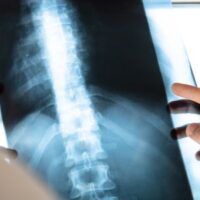How The Location Of Spinal Cord Injuries Affects The Human Body

Spinal cord injuries are one of the most common forms of trauma a person can suffer in an accident, but the implications for the victim will vary considerably. The National Institutes of Health (NIH) explains that the trauma is classified as incomplete versus complete based upon whether the spinal cord is able to transmit messages from the brain to the rest of the body. With a complete spinal cord injury, all nerve communications, sensation, and functions are lost.
A second factor that affects the nature of spinal cord injuries is the location of the trauma. The spine is divided into four regions, and damage to nerves and tissues in certain areas will have varying effects for the victim.
Accidents are the most common cause of spinal cord injuries, with the top causes being traffic crashes and slip and falls. These incidents are preventable, which means California personal injury laws allow you to seek damages from a negligent party. It is wise to consult with an Oakland spinal cord attorney about the legal process, but some information on location of the trauma is useful.
Lumbar Region: This section is the lower back, a set of 5 lumbar vertebrae extending up from above the buttocks. The lumbar carries the most weight among the different regions of the spine, so the vertebrae are larger. When this part of the spine sustains trauma from an accident, there will be some loss of function in the hips and legs. A complete spinal cord injury to the lumbar region may result in paraplegia, so the victim may experience mobility problems and be unable to walk.
Thoracic Spinal Cord Injuries: The thoracic spine is directly above the lumbar, and it comprises 12 vertebrae starting at around the level of the top rib. The numbered thoracic vertebrae and the respective parts of the body work as follows:
- Nerves in the T1 through T5 affect the chest, abdomen, lungs, and surrounding muscles.
- Damage to the T6 through T12 nerves may impact certain bodily functions, balance, and muscle control.
Paraplegia is likely with a thoracic spinal cord injury, but a victim may also lack control over bowels and bladder. There can also be effects upon motor skills and dexterity with hands and fingers.
Trauma to the Cervical Spine: The section of the spine toward the neck is where the effects of a spinal cord injury are the most profound. The cervical spine is closer to the brain, so the disruption of messages will have the greatest impact. Quadriplegia is common, in which there is no sensation or function below the shoulders or neck. With major trauma to the cervical vertebrae, a victim:
- May be unable to breathe, eat, or control bowels without medical assistance;
- Will be confined to a wheelchair, usually with mouth-operated controls; and,
- Could require 24-hour a day skilled nursing care.
Seek Compensation with Help from an Oakland Spinal Cord Injury Lawyer
To learn more about your remedies after an accident, please contact Venardi Zurada, LLP to set up a free consultation. We can meet with you at our offices in Oakland or Walnut Creek, CA to discuss next steps.
Source:
ninds.nih.gov/health-information/patient-caregiver-education/hope-through-research/spinal-cord-injury-hope-through-research

 The Official Injury Attorneys of the San Francisco 49ers
The Official Injury Attorneys of the San Francisco 49ers